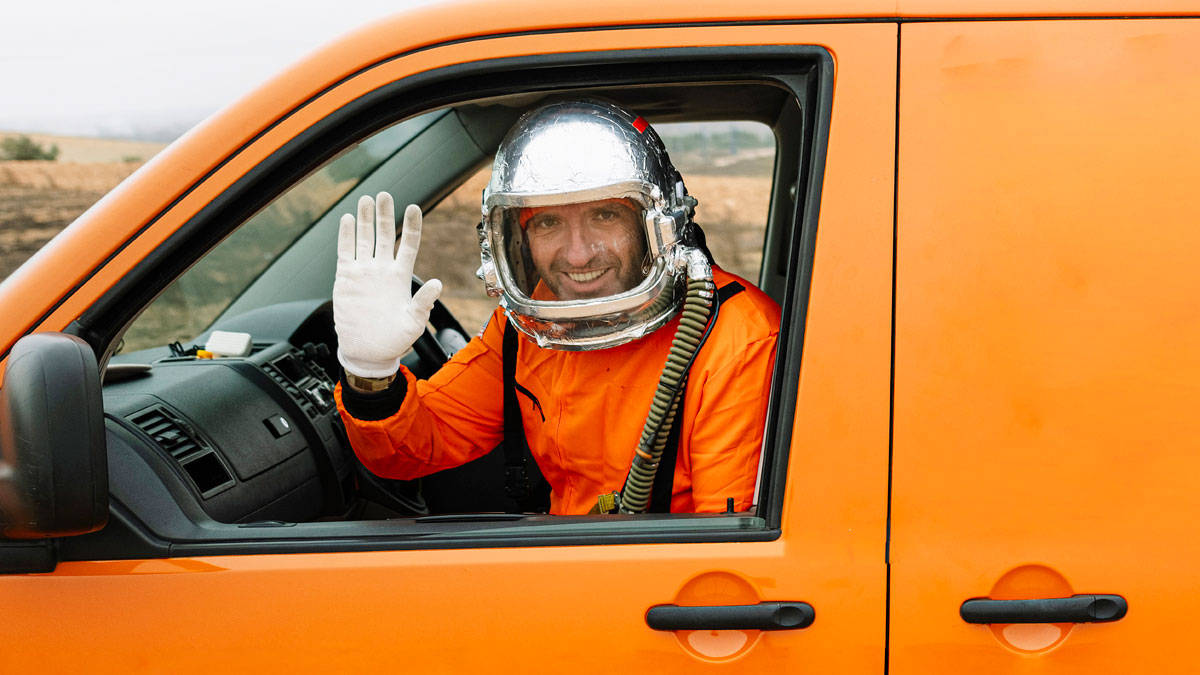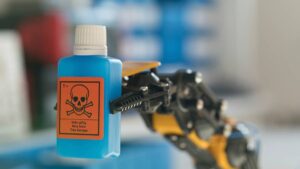Why the ASMH could be the giant step Australia needs to stay in the race into space

Hey, it's Gregor's joke... Picture: Getty Images
With Federal and State government money behind it, the plan to build a satellite manufacturing hub just outside the ACT will boost prospects for the Australian space industry.
When you see a spaceman… you park in it, man. And that’s the plan for a handful of space-tech companies and academics from the University of Technology, who are about to get their own facility on the outskirts of Canberra, accompanied by a sister site in the Sydney suburb of Botany.
The Australian Satellite Manufacturing Hub (ASMH) will put local space boffins in a commanding position to build homegrown sub-500kg space hardware to heave into the sky.
That means a significant boost to Australia’s “nationwide approach to developing Australia’s space qualified ecosystem and will see the assembly and integration of larger satellites, space vehicles and components”, according to Jim McDowell, CEO of ASMH collaborator Nova Systems.
The take-home from this is pretty straightforward; Australia will be taking one of its first major steps towards getting serious about space, and – most importantly – ending our reliance on other countries’ hardware to gather vital information about what’s happening on our shores.
We’re all in this ASMH thing together
The ASMH is a major collaboration between Electro Optical Systems (ASX:EOS), Nova Systems, Gilmour Space and UTS Tech Central, with the Federal and NSW Governments kicking in $23.5 million and $22.8 million respectively. The remaining funding is coming from EOS and Nova ($10 million) and Gilmore Space ($5 million).
“Funding for the Australian Satellite Manufacturing Hub will further help lift our credentials as a leading space nation,” former Federal Minister for Industry, Energy and Emissions Reduction Angus Taylor said, shortly before losing his job.
“This Hub will help grow capability in our space sector, support the development of new high-skilled jobs and enable the space supply chain a place where collaboration to build large satellites is right here at home.”
The initial stage of the project has been specifically designed to produce very expensive things for Earth Observation satellite missions, which aligns with the Federal Government’s space objectives, as outlined in the Australian Space Agency’s Earth Observation from Space Roadmap 2021-2030.
EOS CEO Glen Tindall is, understandably, pretty excited about this development, and spoke to Stockhead recently, because we called him and asked him to. (Nicely.)
“The government’s had a policy for a while now, to develop Australia’s domestic space industry,” Tindall says, “and this is them showing commitment – rather than just talking, they’re really supporting Australian industry towards realising that vision.
“EOS is one of Australia’s oldest space companies, and this is a natural evolution for us. We are heavily geared towards government, in terms of science and defence, and this fits quite naturally into our plans for the future.”
While the development of the ASMH is great news for the companies involved, there are a number of positives to come out of this announcement for Australia as a whole.
That includes a projected creation of at least 125 jobs, spread across the sites in Jerrabomberra South, near the border with the ACT, and the site in Sydney.
Going our own way
On top of that, another key upside will see Australia moving towards an end to our need for overseas assets to keep an eye on what’s happening in Oz.
“A country like Australia is heavily reliant on space for generating scientific data on things such as climate science, water resources, weather and transport,” Tindall says.
Tindall adds that there’s another multipler effect in play here – the scientific data generated from our own satellites will have wide-ranging benefits for industries like mining, agriculture and fisheries, to name just a few.
The next logical step for the hub, once the science data is flowing like the mighty Mississippi, will involve putting things together to help defend itself.
Pew pew
The entire setup at the ASMH is going to be building towards a dual-use operation for civilian and defence work, with work coming from scientific organisations such as the CSIRO and Defence Science and Technology.
“There’s a natural evolution there for scientific data being used for multiple purposes,” Tindall says. “If I had to hazard a guess, I’d say initially we’d be doing more science and over time, it’d grow to a 50:50 split with Defence,” Tindall says.
“The reason for that is Defence is a conservative buyer – the sort that wants to see a track record before they’ll take risks, given the operational nature of that sector.”
It’s unclear at this stage whether the Defence work falls under the exciting prospect of sending lasers into space to reduce enemy threats to their constituent molecules – but it’s far more likely that it will involve satellites that help us spot and identify potential threats.
But even if the ASMH won’t be building a Death Star with an Aussie flag on the side, the reality is that the facilities are if not the giant leap, at least the runway for one that Australia needs to put us firmly on the space industry map.
Related Topics
UNLOCK INSIGHTS
Discover the untold stories of emerging ASX stocks.
Daily news and expert analysis, it's free to subscribe.
By proceeding, you confirm you understand that we handle personal information in accordance with our Privacy Policy.








